Coronavirus: Tourist hotspots deserted as virus spreads
- Published
The outbreak of coronavirus is having major repercussions on the movement of people across the world, affecting many popular tourist attractions.
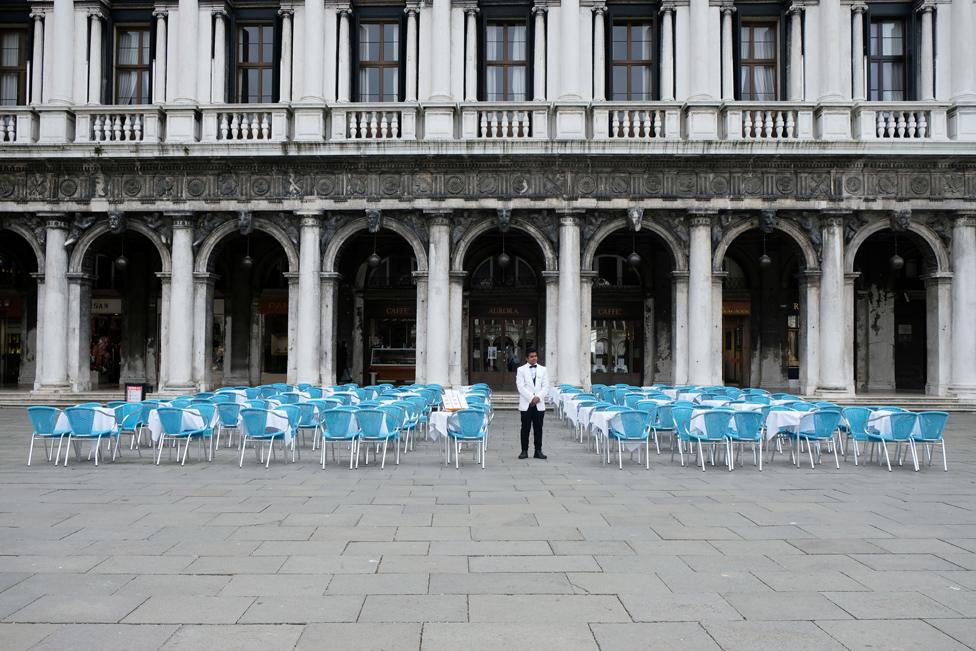
A waiter stands by empty tables outside a restaurant in St Mark's Square, Venice, usually one of the world's most vistited cities.
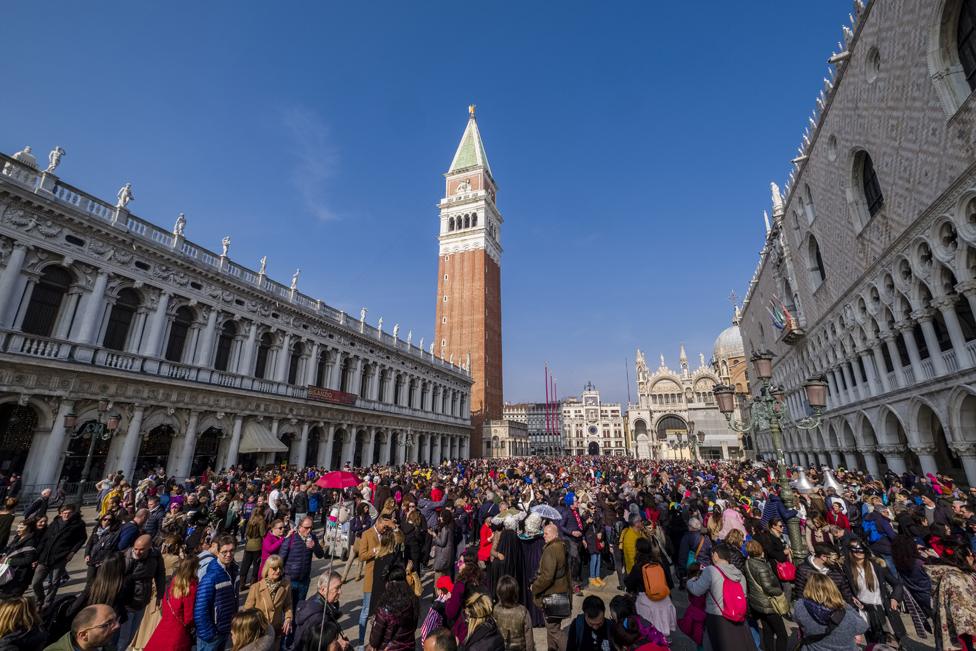
A more typical picture of the Square taken during Carnival season in March 2019.

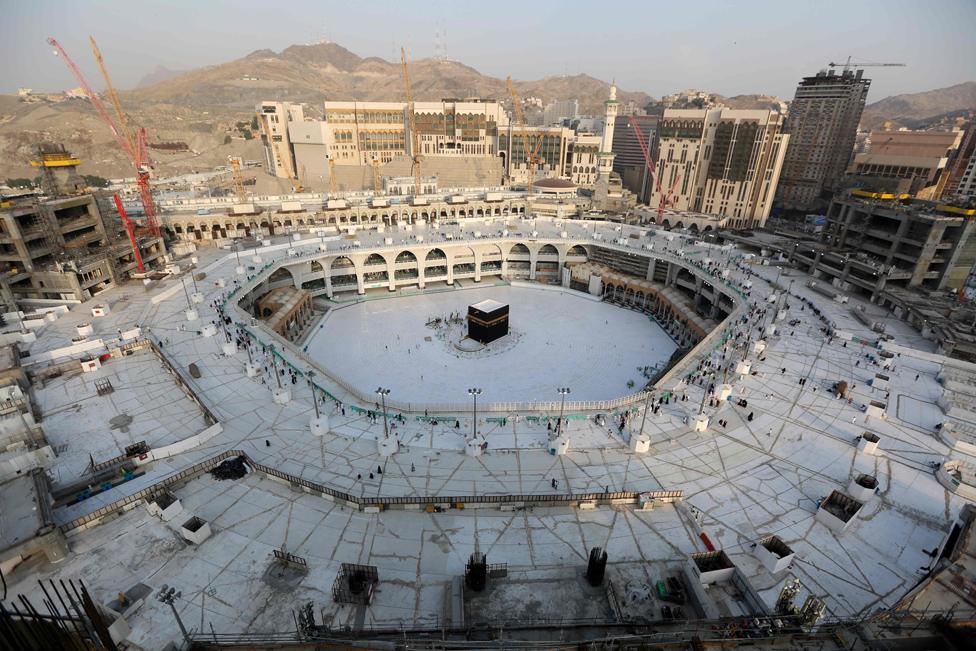
An aerial view of Mecca's Grand Mosque, empty of worshippers, on 5 March, when the site underwent a deep clean to help reduce the spread of coronavirus.
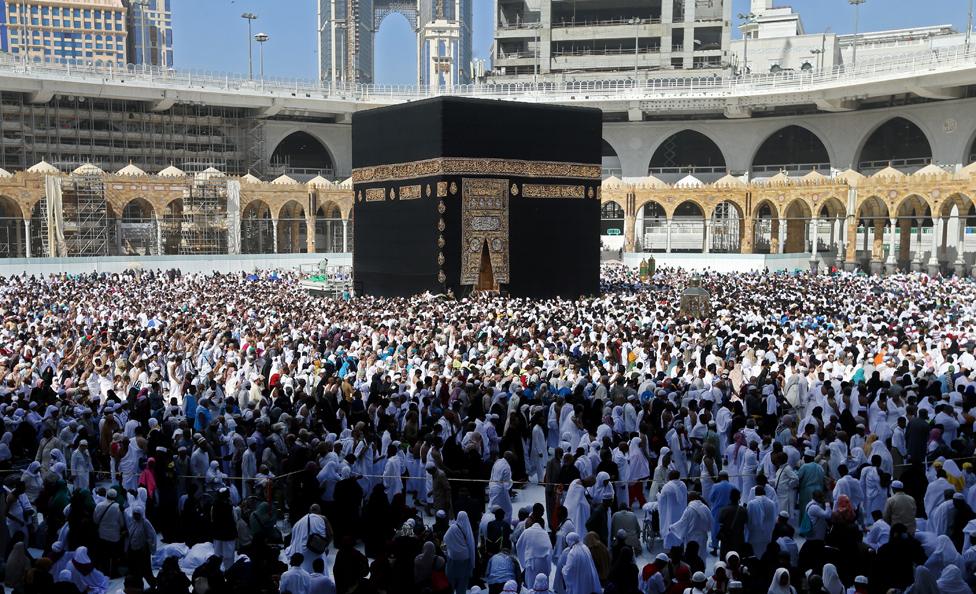
Only about a week before, crowds of Muslim pilgrims could be seen walking around the sacred Kaaba shrine at the centre of the Mosque.

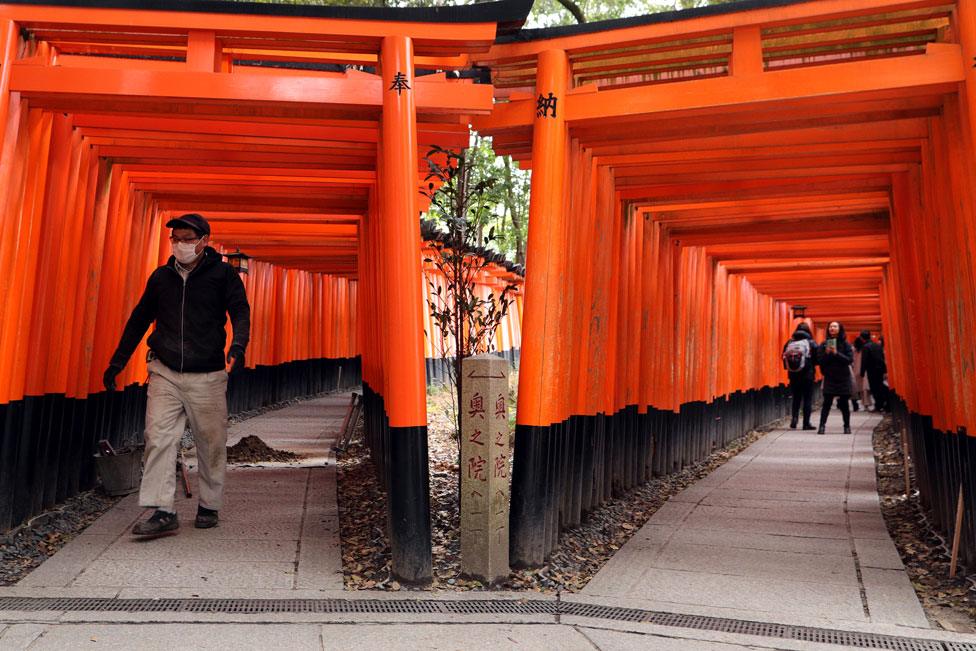
A handful of people visit the Torii gates of Fushimi Inari-taisha shrine in Kyoto, Japan.

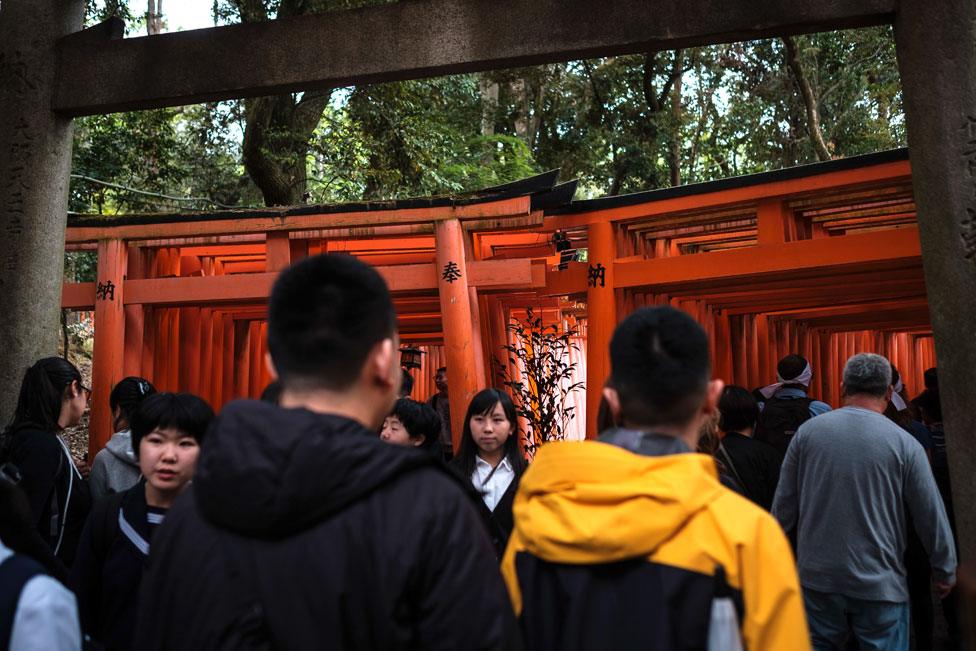
Normally the sacred site is overrun with visitors, as here in April 2019.

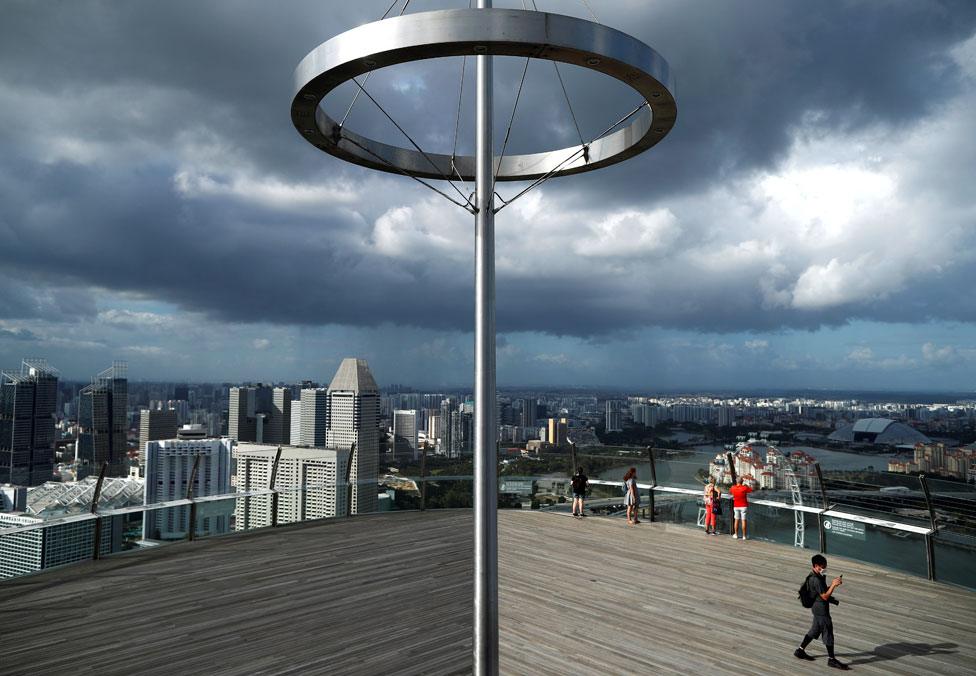
The Marina Bay Sands Skypark Observation Deck is largely empty as tourism is hit by the coronavirus outbreak in Singapore.

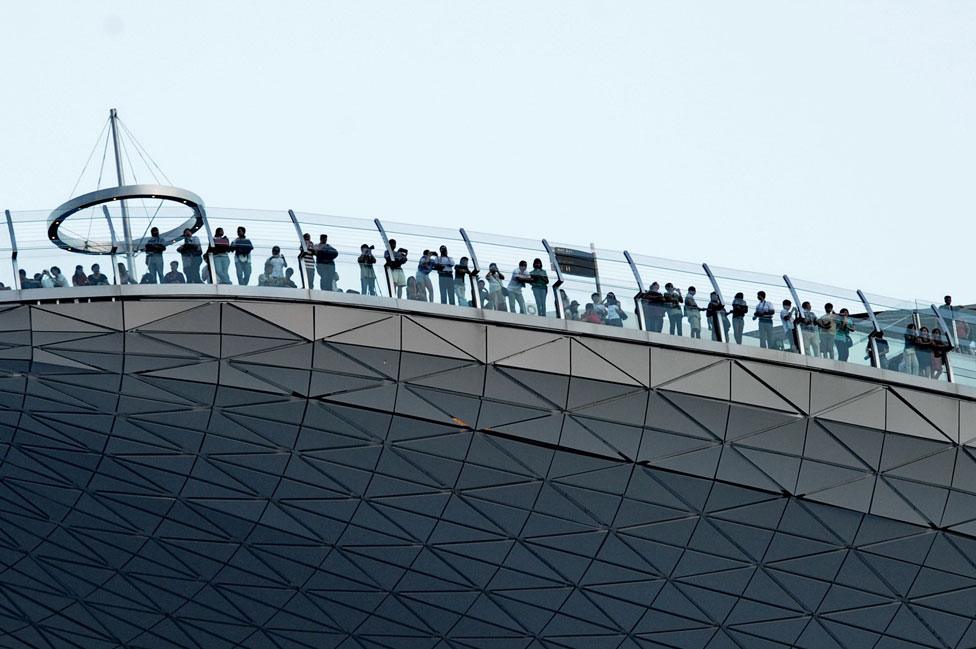
Since the deck opened in 2010, it has attracted large visitor numbers.

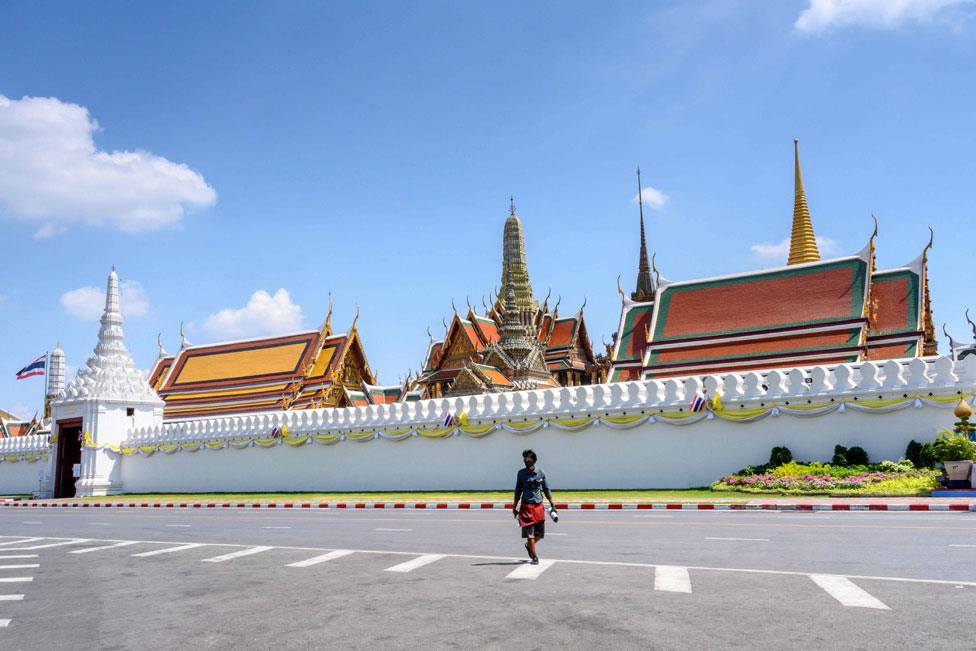
A man wearing a mask crosses a deserted street in front of the Grand Palace in Bangkok.

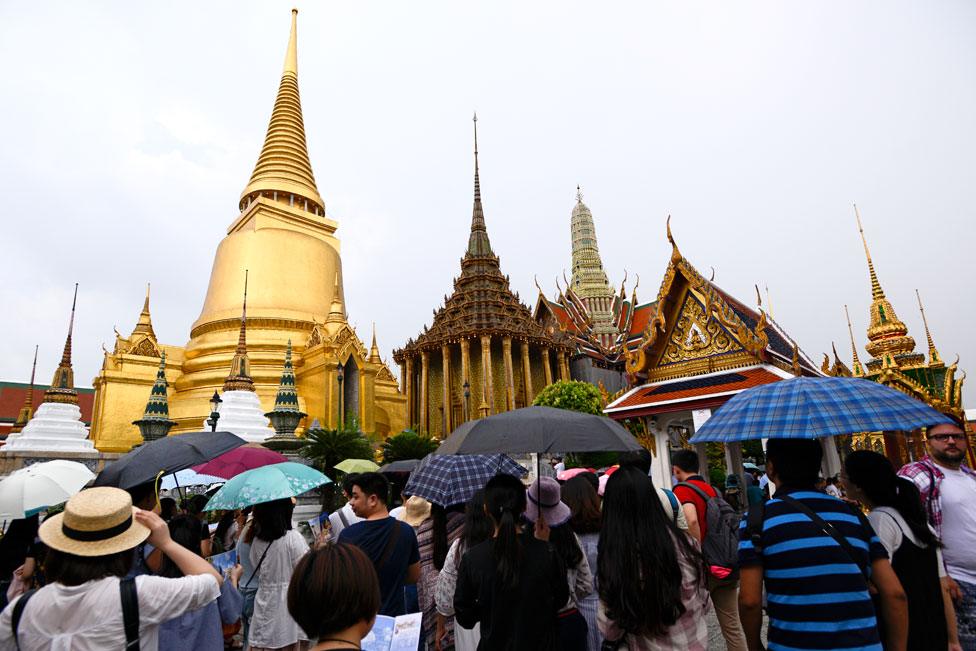
Even in poor weather, the site is usually thronging with tourists, such as these Chinese visitors in 2017. There has been a large downturn of Chinese tourists worldwide since the outbreak which originated in Wuhan in China.

All images copyright as marked.